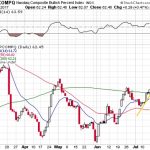Mike Gleason: It is my privilege now to welcome back Michael Pento, president and founder of Pento Portfolio Strategies, and author of the book The Coming Bond Market Collapse: How to Survive the Demise of the U.S. Debt Market. Michael is a well-known money manager and a fantastic market commentator, and it’s always great to have him here on the Money Metals podcast.
Well, Michael, you have recently written about why current problems in Turkey are definitely worth paying attention to. There are some similarities with the Asian crisis of the late 1990s which had ripple effects around the globe. The entire developing world is drowning in dollar denominated debt. If there are defaults, lenders in the first world, including major banks in Europe and the United States will have a real problem. Now, there have been a number of brief panics in recent years over the potential for default in places like Greece, Italy, Argentina. Officials seemed to have been able to kick the can and avoid a full-blown crisis, but one of these days people are going to be surprised and find out the reckoning for all the borrowing and debt has finally arrived. Turkey’s economy dwarfs that of Greece, so what do you make of the current events there, Michael? How serious are things really?
Michael Pento: Turkey is only 1% of global GDP is like to say there are 100% of the problems extent in the world today. Mainly, they just borrowed too much debt. Most of that debt is in dollars. As a matter of fact, the total dollar denominated debt is 11 trillion outside of the U.S., and that’s up 83% since 2009. And one-third of that is owned by emerging markets. So when the dollar rises, it puts a lot of stress on emerging market currencies, and emerging market economies. And the truth of the matter is emerging markets aren’t even that much different than the developed world. And you could throw China in that mix too. There’s an increase of $70 trillion worth of global debt since 2007. That’s an increase of over 40% and it all hinges on one thing, Mike. It all hinges on the fact that interest rates can never be allowed to rise much above zero, for if they did the entire artificial edifice comes crashing down.
Mike Gleason: You examined the yield curve very closely and have long talked about how an inverted yield curve is usually a danger sign and leads to recession. What’s the latest there, Michael, and what are you seeing with short term and long term rates? And is a flattening or inverted yield curve still a big concern of yours?
Michael Pento: Well, it was a big concern of mine, but of course, the carnival barkers on Wall Street are quickly dismissing the fact that the yield curve now, the spread between the 10-year note and the two-year note is just 22 basis points. That is by far the lowest it’s ever been outside of the great recession. And the reason is very simple why we’re concerned about this. Nine of the last ten times this has occurred since WWII, the economy entered into a very steep recession, and the reason for this is always the same. People argue, well, the yield curves inverting for reasons that are mechanical in nature, it has nothing to do with the fact that the global economy might be slowing down. Even though if you look at emerging market economies and their currencies, and stock markets they’re in various degrees of plunging.
The yield curve is inverting as it always does because the Fed is raising short term interest rates. But here’s the question, why is it that the long term interest rates across the world are falling still, if we are in a global synchronized boom or recovery as the carnival barkers like to call it? I mean, why is the 10-year note now well below 3%? It’s just about 2.83% today? Why are the long-term bond yields falling in the spectrum of global growth, considering the fact that we have massive issuance of new debt, and inflation year over year is 2.9%. So, if you have a global growth, you have U.S. growth, you’ve got inflation, a huge supply of treasuries, and yet the yield is falling. So, the yield curve is going to invert.
It’s 21-22 basis points away from inversion right now. That’s maybe one or two rate hikes, 25 basis point rate hike away from inverting. And at the point of inversion the Fed funds rate will stay where it is around 2.5% by the end of this year. They’ll go in September, they’ll probably go in December. That’s my best guess. Then the long bond will retreat back towards where it was in 2016, about 1.4%, and the yield curve will be very, very inverted, steeply inverted. And what happens when the yield curve inverts? Why is important? It’s a good question that you asked. It’s because the credit channel gets shut off. That liquidity pump gets turned off. In other words, if I’m a shadow bank or a regular bank and I’m paying more on deposits or my commercial paper loans, than I can generate on my assets, or my income bearing loans, I stop lending money. The fuel behind asset bubbles dries up, and you get a recession. That’s where we’re headed.








Leave A Comment